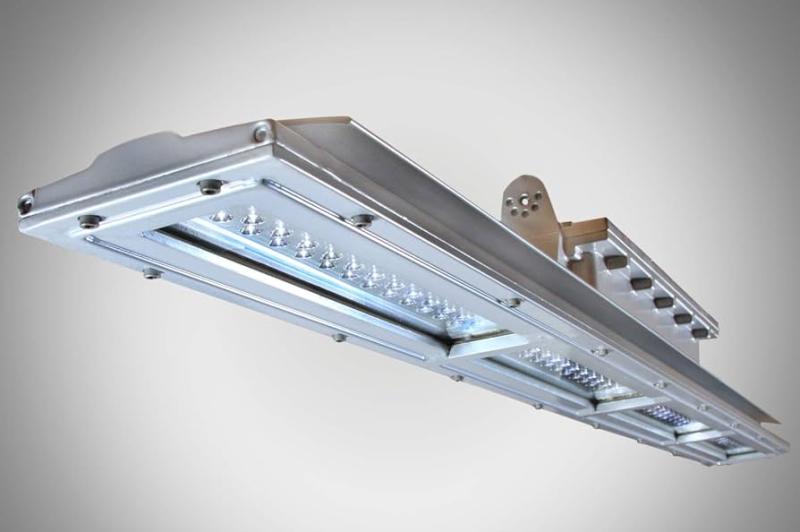Regulations and Certifications for Hazardous Location Lighting
Lighting that will be used in hazardous locations such as oil refineries, chemical plants, and mines must adhere to strict regulations in order to ensure worker safety. The National Electrical Code (NEC) outlines the requirements for equipment used in these dangerous environments. Lights intended for hazardous locations must be certified by authorized testing laboratories to NEC and International Electrotechnical Commission (IEC) standards. This involves testing lights to withstand explosion risks from flammable gases, vapors, and dusts. Only equipment that passes these tests receives appropriate hazardous location certification. Without this certification, lighting cannot legally be installed in hazardous areas due to the risk of explosion.
LED Technology Optimized for Hazardous Environments
Hazardous Location LED Lighting has many advantages over traditional lighting technologies for hazardous locations. LEDs operate at low temperatures and do not produce additional heat, reducing the risk of an explosive ignition. They also have extended lifecycles of 50,000-100,000 hours compared to only around 10,000 hours for fluorescent lamps. This significantly lowers maintenance costs and disruptions from changing burnt-out lights. LED fixtures are also more durable and resistant to vibrations, moisture, and corrosion, enabling them to withstand harsh conditions. Leading LED hazardous location light manufacturers have optimized LED components, coatings, and sealing techniques to meet NEC and IEC certifications for gas, vapor, and dust ignition protection.
Installed Environment Factors and Appropriate Lighting Fixtures
When selecting Hazardous Location LED Lighting, it is important to consider the exact installed environment and hazards present. Factors such as gas classification, operating temperature range, corrosion risks, and vibration levels will determine the appropriate hazardous location LED light fixture. Lights are rated for different gas groups from Group A to Group I and temperature classes ranging from T1 to T6. Lighting must match or exceed the classification of the area where it will be installed. Additional requirements like dust-tight or water-tight seals may also be needed. Experienced hazardous location lighting distributors can help specify LED fixtures customized for any installed location and environmental conditions.
Solar-Powered Options for Remote Sites
Reliable lighting is critical even in the most remote hazardous locations that lack power infrastructure. Solar-powered LED hazardous location lights address this challenge through a self-contained, standalone operation. These lights contain sealed, maintenance-free solar panels and onboard batteries along with specially certified HID or LED lamps. They eliminate the need to trench in power lines or rely on generators for operation. Motion or light sensors activate the lamps only when needed to maximize solar charge. Remote chemical plants, valve stations, and oil or gas wellsites greatly benefit from the reliable, ever-burning light provided by solar hazardous lighting options.
Explosion-Proof vs. Dust-Ignition-Proof Construction
The two main types of Hazardous Location LED Lighting fixture construction are explosion-proof and dust-ignition-proof. Explosion-proof lights use metal or aluminum enclosures with threaded entries for wires and other components to securely contain any potential explosion. They are certified for gas and vapor environments. Dust-ignition-proof lights rely on filter-like materials and sealing techniques to prevent combustible dust from entering luminaire housings and fixtures. These types of enclosures are suitable for lighting located near dust hazards including grain silos, woodworking shops, and landfills. Selecting the correct fixture construction matched to the ignitable substances in the area prevents unsafe conditions.
Industrial-Grade Designs Withstand Harsh Environments
LED fixtures intended for hazardous areas must be built with industrial-grade components to withstand extreme conditions. Heavy-duty aluminum alloy or die-cast zinc housing materials resist impact, corrosion, and weathering. Tight compression seals on lenses, junction boxes, fixtures entries, and seams maintain the integrity of explosion-proof and dust-ignition-proof enclosures. Toughened clear impact-resistant glass or polycarbonate lenses protect lamps. Internally, sturdy mounting tracks, brackets, and bezels securely hold LED boards and drivers. Stainless steel or corrosion-resistant hardware ensures long product life. These industrial-strength designs allow hazardous location LED lights to endure demanding, high-abuse environments for extended periods.
Maintenance and Life-Cycle Cost Savings
While upfront costs may be higher, Hazardous Location LED Lighting provide major long-term savings through increased uptime and reduced maintenance over traditional light sources. Their long rated lifetimes of 50,000-100,000 hours mean lights only need replacing once every 10-20 years versus every 1-2 years for other lamp types. This cuts down on lost production and safety risks from frequent hot work permits and light replacements. Integral LED drivers further improve reliability over replaceable ballasts. Energy efficiency slashes ongoing power usage costs anywhere from 50-75% compared to other lighting technologies. Combined, the elimination of early relamping and lower electricity use yields huge cost benefits over the lifetime of LED luminaires installed in hazardous areas.
Get More Insights on- Hazardous Location LED Lighting
Explore Related Article- Web Scraping Services Market
About Author:
Ravina Pandya, Content Writer, has a strong foothold in the market research industry. She specializes in writing well-researched articles from different industries, including food and beverages, information and technology, healthcare, chemical and materials, etc. (https://www.linkedin.com/in/ravina-pandya-1a3984191)
